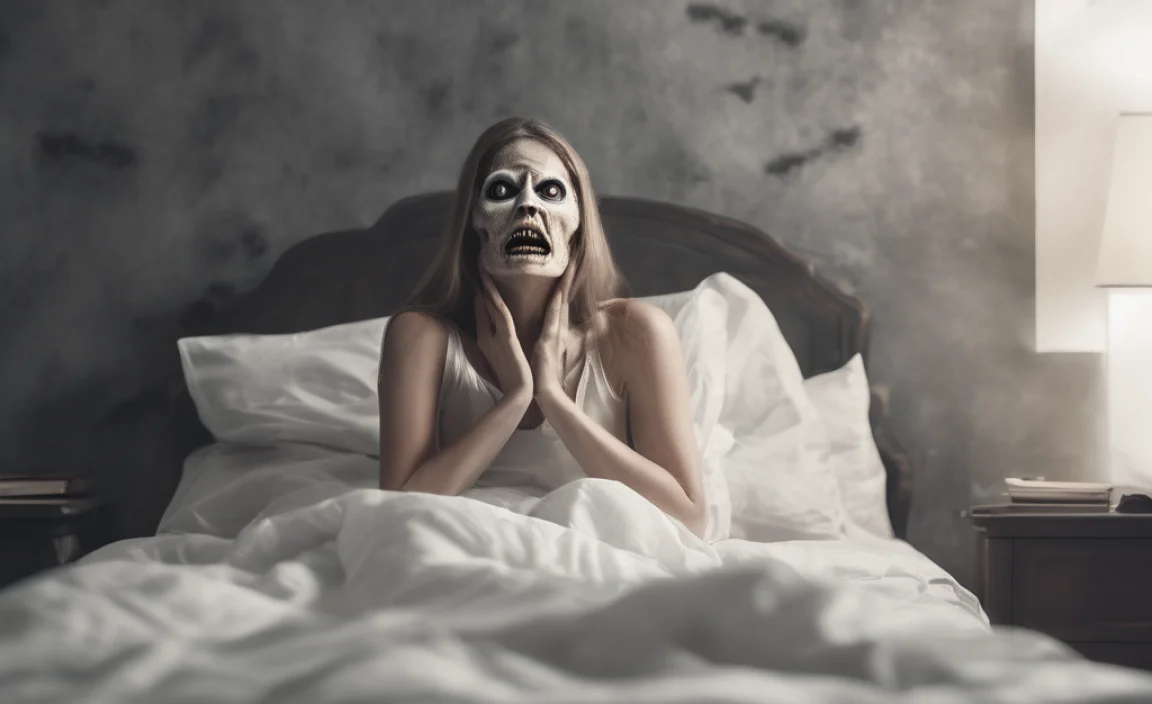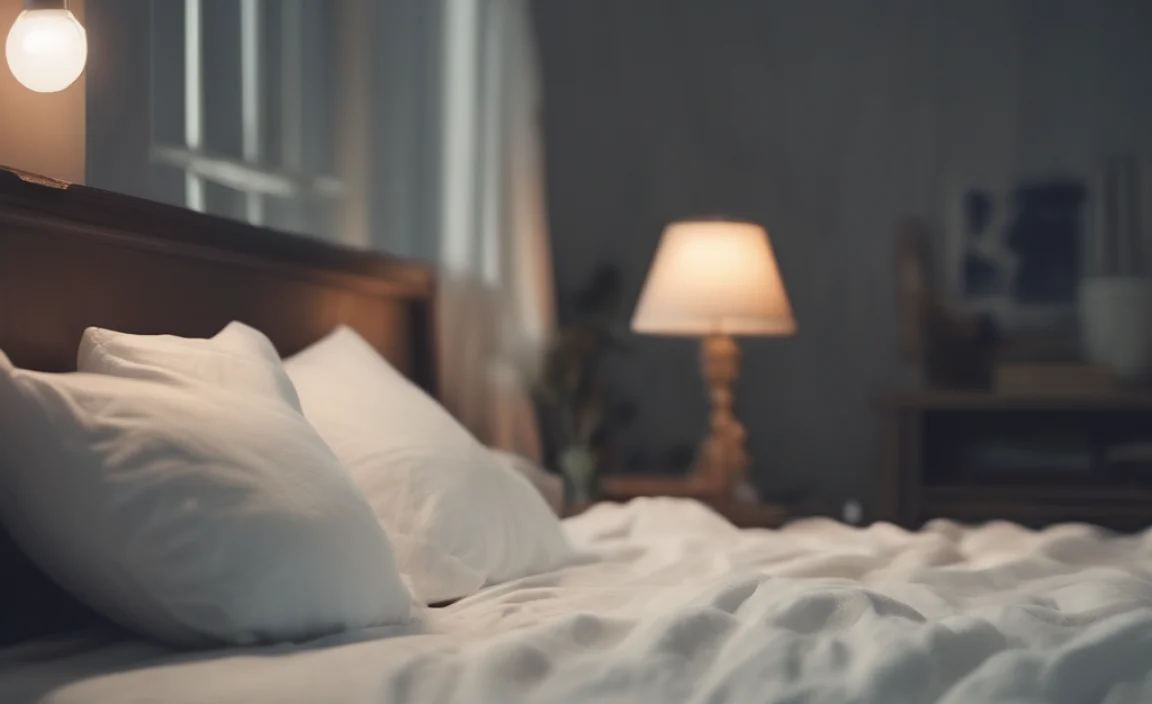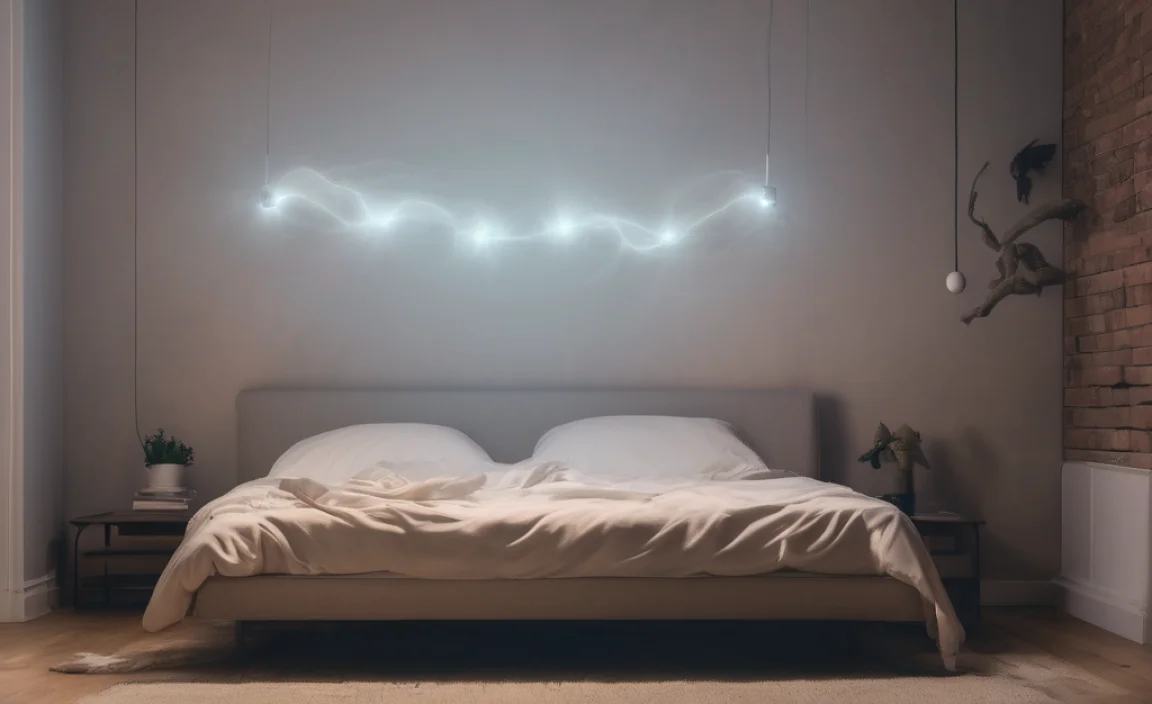Do you know what happens when you sleep? Many people experience creepy facts about dreams that can be surprising and strange. Imagine being chased by a monster or flying like a bird. Dreams can seem real and sometimes a little spooky. Scientists study dreams to understand their mysteries. Would you like to know why dreams can be creepy? Let’s explore these fascinating night-time stories!
Key Takeaways
- Dreams can reveal hidden fears and worries.
- Some dreams repeat the same spooky themes.
- Most people forget their dreams quickly.
- Nightmares are common creepy facts about dreams.
- Animals like dogs and cats also dream.
Creepy Facts About Nightmares

Nightmares are scary dreams that can wake you up. They often happen during deep sleep. Many children and adults have them. Nightmares can feel so real. They leave you frightened even after waking up. Sometimes, they are about falling, being chased, or losing something important. Scientists think nightmares help us handle fears and stress. They are like practice for real-life problems.
- Nightmares can interrupt your sleep.
- Spicy foods can cause nightmares.
- Not everyone remembers their nightmares.
- Children have more nightmares than adults.
- Stress can make nightmares worse.
Nightmares can be scary, but they don’t last long. You can tell someone about your nightmare to feel better. It helps to understand that they are just dreams. Creating a calm bedtime routine can reduce bad dreams. Listening to soothing music or reading a happy story can also help.
Fun Fact or Stats : Over 50% of adults have occasional nightmares.
Why Do We Have Nightmares?
Have you ever wondered why nightmares happen? It’s a question many ask. Nightmares often occur because of stress or worry in real life. When our brains process these feelings, they can create scary images. Sometimes, eating late at night or watching a scary movie can trigger nightmares. Not everyone experiences them the same way, though.
How To Handle Nightmares
What should you do after a nightmare? It’s okay to feel scared. First, take deep breaths to calm down. You can talk to someone you trust about your dream. This can make you feel supported. Remember, nightmares are stories your brain makes up. They aren’t real, and you are safe.
Can Nightmares Be Good?
Is it possible that nightmares have a good side? Surprisingly, yes! Nightmares can teach us how to cope with fear. They can show us our deepest worries. By understanding these dreams, we learn more about ourselves. Next time you have a nightmare, try to see if it tells you something important.
Creepy Sleepwalking Stories

Have you ever heard of sleepwalking? Some people get up and walk around while still asleep. This creepy fact about dreams can be quite surprising. Sleepwalkers may do simple activities like dressing or even trying to leave the house. They usually don’t remember what happened. Sleepwalking is more common in children than adults. It can be a bit scary to see someone sleepwalking, but it’s usually harmless.
- Most sleepwalkers don’t remember their actions.
- Sleepwalking runs in families.
- It happens during deep sleep stages.
- Stress can trigger sleepwalking.
- Waking a sleepwalker is hard.
- Sleepwalkers may talk while walking.
To keep sleepwalkers safe, you can remove obstacles in their path. Make sure doors and windows are locked to prevent them from wandering outside. A calm and regular sleep routine helps reduce sleepwalking episodes. It’s important to be gentle if you need to guide a sleepwalker back to bed.
Fun Fact or Stats : About 1 in 15 people experience sleepwalking.
What Triggers Sleepwalking?
Why do people sleepwalk? Sleepwalking can be triggered by stress, lack of sleep, or even illness. Some medications might also cause it. If someone in your family sleepwalks, you might too, because it runs in families. It usually starts when kids are young but often goes away as they grow up.
Is Sleepwalking Dangerous?
Could sleepwalking be dangerous? It can be if sleepwalkers are not careful. They might bump into things or try to leave the house. That’s why it’s important to create a safe environment for them. If you notice someone sleepwalking, gently guide them back to bed or ensure their path is clear of obstacles.
Can Pets Sleepwalk?
Do animals sleepwalk like humans? Pets can have similar sleep movements, but they aren’t exactly sleepwalking. Dogs might move their paws or twitch while dreaming. It’s normal and usually nothing to worry about. If a pet seems to sleepwalk, watch them to make sure they don’t hurt themselves.
Unveiling Sleep Paralysis

Have you ever woken up and couldn’t move? This scary experience is called sleep paralysis. During sleep paralysis, your mind is awake, but your body can’t move. It feels like being trapped in your own body. Many people also feel a presence in the room. This is one of the creepy facts about dreams that many find unsettling. Sleep paralysis can happen to anyone, but it is harmless and temporary.
- Sleep paralysis lasts a few seconds to minutes.
- It often occurs when falling asleep or waking up.
- Many people experience it at least once.
- Stress can increase sleep paralysis episodes.
- It’s sometimes linked with vivid dreams.
To manage sleep paralysis, focus on breathing calmly until it passes. Understanding that it’s a natural phenomenon helps reduce fear. Adequate rest and a regular sleep schedule can prevent frequent episodes. If sleep paralysis bothers you often, talking to a sleep expert is a good idea.
Fun Fact or Stats : Around 8% of people experience sleep paralysis.
What Causes Sleep Paralysis?
Wondering what causes sleep paralysis? It happens when the body is in a state between sleep and wakefulness. During sleep, your body relaxes and does not move. Sometimes, your brain wakes up before your body, causing this temporary paralysis. Stress and irregular sleep patterns can trigger these episodes.
How To Cope With Sleep Paralysis
Feeling scared during sleep paralysis is normal. To cope, remind yourself that it’s temporary. Try to focus on breathing and stay calm. Relaxing music before bed or gentle stretches can help reduce episodes. Sharing experiences with someone can also bring comfort and understanding.
Is Sleep Paralysis Harmful?
Should you worry about sleep paralysis? It might be scary, but it’s not harmful. Many people experience it once or a few times without trouble. If it occurs often, it might disrupt sleep. In those cases, seeking advice from a sleep specialist can help manage it better.
Strange Sleep Talking Tales

Have you ever heard someone talk in their sleep? Sleep talking is a funny and sometimes strange behavior. When someone talks in their sleep, they might say complete sentences or just mumble. Sleep talkers usually don’t remember what they said. It’s more common in children than adults. Sleep talking is harmless and often just a quirky part of dreaming.
- Sleep talking can be loud or soft.
- It includes speaking clearly or mumbling.
- Stress might increase sleep talking.
- Sleep talkers don’t remember their words.
- Both kids and adults can talk in their sleep.
- Sleep talking might happen with other sleep disorders.
Sleep talking doesn’t usually need treatment. Creating a peaceful sleep environment can help reduce it. White noise machines or soothing music can create a calming atmosphere. If sleep talking disrupts others’ sleep, moving the sleep talker’s bed away might help.
Fun Fact or Stats : Up to 60% of children sleep talk occasionally.
Why Do People Sleep Talk?
Ever wondered why people talk while sleeping? Sleep talking occurs during light sleep stages. The exact cause is unknown, but it can be linked to stress, fever, or lack of sleep. Genetics also play a role. If your parents talked in their sleep, you might too. Sleep talking is not usually a sign of anything serious.
Can Sleep Talking Be Stopped?
Is it possible to stop sleep talking? While there’s no definite cure, certain habits can help. Maintaining a regular sleep schedule and a relaxing bedtime routine often reduces sleep talking. Avoiding caffeine or heavy meals before bed might also help. If sleep talking is severe, consulting a sleep expert may provide insights.
Is Sleep Talking Embarrassing?
Is sleep talking embarrassing? It can be funny more than anything. Many people laugh about the silly things said during sleep. It’s a harmless behavior and quite common. If it makes someone uncomfortable, remind them it’s natural and nothing to be embarrassed about. Everyone has unique sleep habits.
Creepy Lucid Dreaming Experiences

Have you ever controlled your dreams? Lucid dreaming allows people to know they are dreaming and even change the dream. It’s like having superpowers in sleep! Some find it exciting, while others think it’s one of the creepy facts about dreams. Lucid dreaming can turn nightmares into fun adventures, but it requires practice and awareness.
- Lucid dreams feel vivid and real.
- People remember lucid dreams clearly.
- Some use techniques to induce lucid dreams.
- It can help turn nightmares positive.
- Lucid dreaming is more common in young adults.
Lucid dreaming takes practice. Keeping a dream journal can help by recording dreams upon waking. Techniques like reality checks during the day can train the mind to recognize dreams. Explore lucid dreaming safely, and it can become a fun way to explore your imagination.
Fun Fact or Stats : About 55% of people have experienced at least one lucid dream.
What Is Lucid Dreaming?
Curious about what lucid dreaming means? Lucid dreaming occurs when you know you’re dreaming and can take control. Imagine flying through the sky or talking to animals in your sleep. It’s like being in your own virtual world. Some people naturally have these dreams, while others practice techniques to achieve them.
How To Achieve Lucid Dreaming
How can you start lucid dreaming? One way is through reality checks. During the day, ask yourself if you are dreaming to make it a habit. Another way is to keep a dream journal, writing down dreams when you wake up. With practice, you might start realizing when you’re dreaming and gain control.
Are Lucid Dreams Scary?
Can lucid dreams be scary? Sometimes, they can be daunting if unexpected. Seeing something strange or eerie might feel unsettling. But remember, you’re in control. You can change the dream to something fun. Lucid dreaming is like being the director of your own movie.
Conclusion
The world of dreams is full of surprises. Exploring creepy facts about dreams helps us understand our minds. From nightmares to sleepwalking, each fact is a story waiting to be told. Even if they seem scary, dreams are a natural part of life. Embrace the adventure and learn what your dreams can teach you.
FAQs
Question: Do animals have nightmares?
Answer: Yes, animals can have nightmares. Pets like dogs might twitch or whimper while dreaming. They experience dreams similar to humans. Observing them might reveal when they’re having a scary dream, just like our creepy facts about dreams.
Question: Can you stop having nightmares?
Answer: Reducing nightmares involves a calm bedtime routine. Avoid scary media before sleep. Trying relaxation techniques like deep breathing can help. If nightmares persist, consult a sleep expert. Nightmares are creepy facts about dreams that often reflect stress and worries.
Question: Why do people sleep talk?
Answer: Sleep talking occurs during light sleep. It can be caused by stress, fever, or even genetics. It’s a normal part of sleep, and many people experience it. Sleep talking is one of the intriguing sleep habits, much like creepy facts about dreams.
Question: What triggers sleepwalking?
Answer: Sleepwalking can be triggered by stress, sleep deprivation, or genetics. It usually occurs in children and can disappear with age. Creating a safe sleep environment helps manage it. Understanding creepy facts about dreams includes learning about sleepwalking.
Question: How can I have a lucid dream?
Answer: To have a lucid dream, try reality checks during the day. Keep a dream journal to remember dreams. With practice, recognizing you are dreaming becomes easier. Lucid dreaming lets you explore dreams creatively, uncovering creepy facts about dreams by turning them into fun experiences.
Question: Is sleep paralysis harmful?
Answer: Sleep paralysis is not harmful, but it can be frightening. It happens when waking or falling asleep. Knowing it is temporary helps. Keeping a regular sleep schedule may reduce episodes. As one of the creepy facts about dreams, it shows how intricate our sleep can be.











